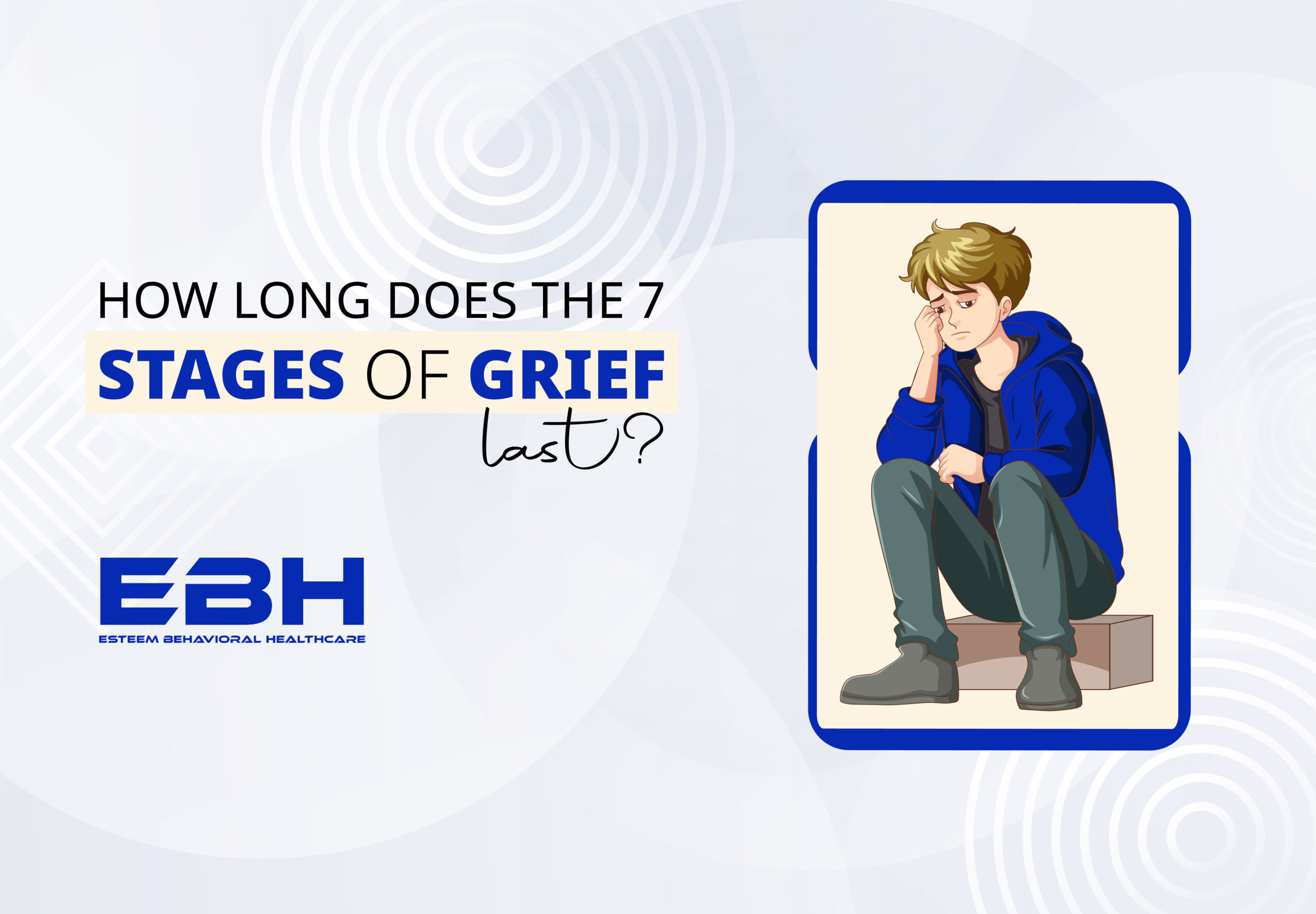Loss triggers grief, which hits everyone differently. It’s hard to make sense of what you’re feeling after losing someone or something important.
The 7 stages of grief framework can be helpful.
But how long do the 7 stages of grief last? Let’s look into each stage and their durations.
Understanding the 7 Stages of Grief
The idea of the 7 stages of grief gives an organized way to process the emotional turmoil after a loss.
-
Shock and Denial
Often, people first react with shock and denial upon a loss. It’s a self-defense mechanism, temporarily shielding oneself from the sting of the loss. This state could last days or more, person-dependent.
People sometimes find themselves going through daily life as if nothing’s different, moving around in confusion.
-
Pain and Guilt
As disbelief subsides, a person is usually hit with intense emotional pain.
Feeling guilty is normal when experiencing grief, particularly if we think of unsaid words or unresolved problems.
This stage can be rough, requiring a face-off with raw emotion. It’s draining, yet liberating.
-
Anger and Bargaining
With oneself feeling powerless and frustrated, anger might surface. You could catch yourself blaming someone else or even yourself.
Negotiating serves as an effort to regain authority, often via “what if” or “if only” thoughts.
This stage shows our inherent will to comprehend the loss and find reason within it.
-
Depression
This stage could last the longest. The reality of the loss dawns on you, and intense sadness or despair might become dominant.
It’s important to remember that everyone grieves differently and this stage may vary for each person.
Emotions can vary from acute sorrow to indifference, warranting self-care at this time.
-
The Upward Turn
Eventually, changes occur. The strong emotions start to ease, and you may see your mood improve. It’s not the end of your grief, but it’s a vital moment in your grief recovery process.
It’s a signal you’re slowly adapting to a life following a loss.
-
Reconstruction
In this stage, your focus shifts to reassembling your life. You handle practical and financial issues and reinvent your identity without your lost person or thing.
New patterns form, and bit by bit, the world regains meaning, albeit differently.
-
Acceptance and Hope
Finally, acceptance isn’t sudden joy. Rather, it’s learning how to live with the loss. Future plans take root, memories stay, yet new realities form.
Acceptance is about recognizing the loss and finding tranquillity, paving the way for hope to arise.
How Long Do the 7 Stages of Grief Last?
So, how long do the 7 stages of grief last?
Truth is, grief has no timeline. Some might navigate these stages in weeks, others might take years.
Grieving has no rulebook. It’s an individual journey, shaped by what you’ve lost and your personal resilience.
The Waves of Grief
Grief comes and goes. One moment, you’re fine. Suddenly, you’re washed over by melancholy.
Reminders of what you’ve lost, like birthdays, anniversaries, or a familiar scent can set off the waves of grief.
Recognizing that grief doesn’t follow a linear path helps in handling these moments.
Mourning vs Grief
Let’s clarify the difference between mourning vs grief. Mourning is how we express grief openly, often influenced by societal or religious norms.
Grief is the internal feeling and experience of loss. Everyone needs both for healing, but they show up differently in everyone, showing the multiple ways people handle loss.
The Process of Moving On
The process of moving on is not about forgetting. It’s about blending the loss into your life while still finding happiness and purpose.
This takes time and kindness towards oneself. Moving forward means accepting change and respecting the past.
Supporting Yourself Through the Grief Recovery Process
Taking care of yourself is important when dealing with loss. This might mean chatting with pals or a counselor, becoming part of a support circle, or doing things that give you calmness.
Just remember, it’s okay to ask for support. Assistance from others can offer solace and a new perspective in this period.
Conclusion: Embracing Your Unique Grief Journey
Understanding how long do the 7 stages of grief last could bring comfort. Yet, it’s vital to know that grief is a profoundly personal journey.
It doesn’t matter if you’re moving quickly or slowly through the stages, what counts is cherishing your emotions and allowing yourself to grieve in your way.
If grief is giving you or someone you know a hard time, Esteem Behavioral Healthcare is available with a helping hand.
Our experts are ready to assist you in traversing your path to healing. Don’t wait, take the first step towards recovery today.
FAQs
What is the 7 step grieving process?
It’s a process that takes you from shock and denial, through pain and guilt, into anger and bargaining, then into darkness with depression. Then, things start to look up with the upward turn, next is reconstruction, and finally reaching acceptance and hope.
How long does each stage of grief last?
It varies, with shock and denial possibly lasting mere days and depression extending for months. A set timeline doesn’t exist for grief, everyone has their own.
Does grief age your face?
Not directly. But the stress and emotional toll of grief might cause physical signs of aging like more lines or a tired look. This is due to changes in lifestyle caused by stress.
Why is grief so painful?
Grief is painful because it’s how we react emotionally when we lose someone or something that means a lot to us. The deeper the pain, the stronger the bond was. It’s hard, but it’s a natural part of healing.
What organ does grief affect?
Mostly, it’s the heart and the lungs. The heart because that’s where we often feel emotional pain. It can also change the way we breathe, showing its effect on both emotional and physical health.


No comment